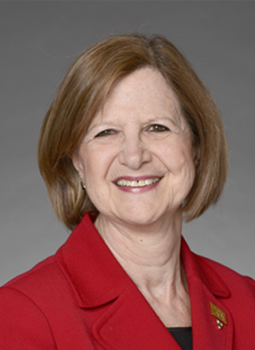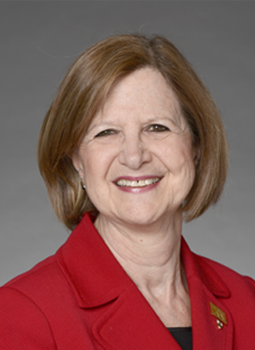Like so many others, I often think about the unfair hand homeless persons have been dealt in life, and my mind wonders why. To seek answers, I make a point of taking homeless persons with me to have a coffee or a meal. They have helped me deepen my understanding of why they have become homeless and how they live. I thank them for having fueled my passion to harness RNAO’s power to fight for them. This is a fight RNAO member and street nurse Cathy Crowe, recipient of the Order of Canada, has engaged in for almost three decades. Cathy is a social activist, author and filmmaker seeking to eliminate homelessness.
This winter, I have asked myself over and over again: what is wrong with us – as people and as a society? Temperatures have been absolutely freezing. As I turn the fireplace on at my own home because the heating system sometimes isn’t enough to keep us warm, I struggle to imagine how someone without a roof over their head can survive on the street. Some don’t, and that thought shakes me to my core.
Canada is one of the most affluent nations in the world. How can we be so emotionally detached about the extreme suffering of others? And it’s not only in extreme weather conditions that we see the emotional and human distancing people display towards homeless people. Pedestrians in cities across our country walk by homeless persons, avoiding eye contact. It’s as though they don’t exist. But they do, and homeless persons are people, just like you or me.
In January, I met Joe King, a homeless man on Queen Street in Toronto (see page 10). He seemed pleased that I stopped to talk with him, but the truth is, I was honoured he would be so generous to engage with me. I told him I was on my way to a media conference to speak about better supports for homeless persons. He told me he knew about it. He also knew that the Canadian Forces’ Moss Park Armoury had been opened for additional support during the winter months.
When I asked Joe if he used the shelter system, he told me he has severe arthritis, and is not agile enough to get up in the morning and go as quickly as he would be required to in a shelter environment. He said he only goes to a shelter if the weather is so bad he’s afraid to be outside. He declined my offer to join us at the media conference that day because he said he needed to make $20.
I wished him well and did my part to help him reach his goal.
Sadly, there are thousands of people across Ontario and Canada who are in Joe King’s situation. It would be easy to feel overwhelmed by this sad truth if not for the inspiration we can all find in knowing we can make a difference – individually and collectively.
One only needs to spend a short time outside Toronto’s Holy Trinity Church to see the importance of the work Cathy Crowe, the Ontario Coalition Against Poverty (OCAP), and others do for one of our most marginalized populations. I was there in January and participated in a service recognizing those who have lost their lives just this winter to homelessness. Three names were added to the Toronto Homeless Memorial.
I also went inside the church and spoke with a group of people who were having a warm meal. When I spoke with one of the organizers, he told me there were about 20 “regulars” and that he enjoyed seeing each of them every day. He too was an inspiration.
As I walked back to the office that day with my colleague Marion Zych, RNAO’s director of communications, we spotted a young man – his name is Sean – huddling under a blanket in the extreme cold. We stopped to let him know about the hot lunch close by, and suggested he might want to warm up. He declined the offer of lunch, and said he was okay given the warm air coming up from the grate below him. I told him I was a nurse, and he surprised me with his response. Two decades ago, Sean studied nursing for two years at Loyalist College. For health reasons, he didn’t complete the program. He got into construction work instead, but found himself on the street when his anxiety became too intense to continue working. He asked if, at 45, he was too old for nursing. And I reassured him that it wasn’t impossible.
We’ve exchanged emails and we’re going to have lunch to talk. Maybe we’ll get Sean back to nursing. Wouldn’t that be amazing?


